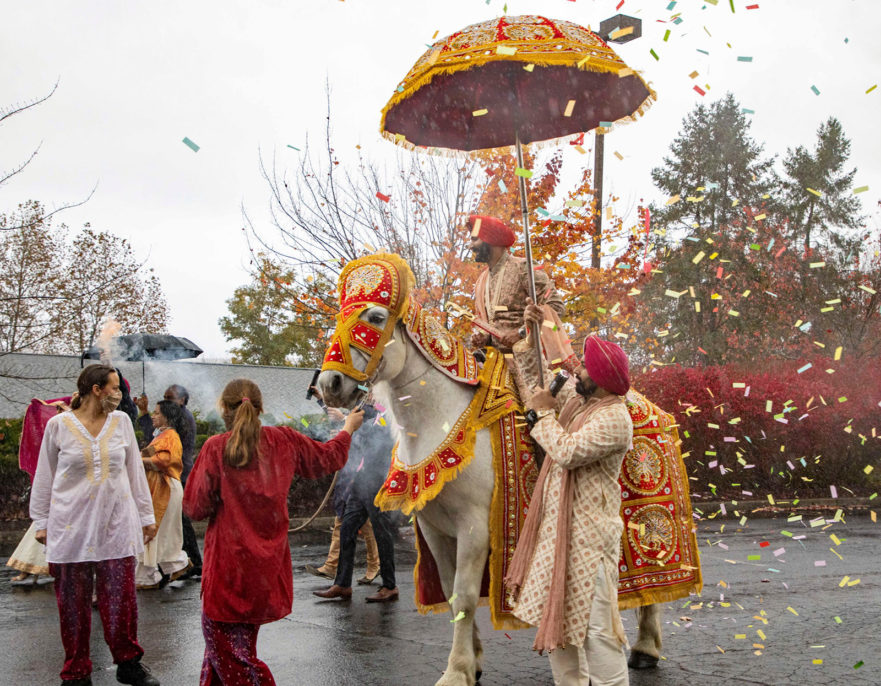Indian weddings possess a true beauty within the traditions and vows exchanged between the bride and groom. Over the years, guests have attended ceremonies and have been confused by the religious rituals performed. Below is a brief outline of how a ceremony might go and the meanings behind each stage:
- The Baraat: the arrival of the groom on either a horse or an elephant (we have done both). This is a fun event that allows the groom’s side to dance and celebrate before the coming ceremony.
- Meeting of the Families: the bride’s family greets the groom’s family at the end of the baraat. At this time the bride and groom exchange garlands, called the Milni.
- Ganesh Puja: the ceremony has begun and the Pandit begins with a prayer to Ganesh.
- Kanya Aagman: this is the arrival of the bride. She is escorted to the mandap, where usually her parents, the grooms parents, and siblings are seated.
- Jai Mala: the bride and groom exchange the sacred garlands.
- Aachman: this is the purification of the bride and groom. They take water and drink it from the palms of their hands.
- Agni Pradipan: the sacred fire is lit, signifying the power and purity of the ceremony.
- Madhuparka: the bride’s family offers yogurt and honey to the groom with a prayer, signifying that he will work to be pure and kind.
- Kanya Daan: the bride is given away to the groom by placing the bride’s right hand in the groom’s hand. The groom is now entrusted to care for the bride and love her.
- Shila Rohan: the rock ceremony is for the bride to show her courage by stepping on a rock and proving she will support her husband throughout their life together.
- Mangal Fera: the bride and groom walk around the fire four times, each time signifies something different; duty, prosperity, love, and spiritual liberation.
- Saptapadi: the seven sacred steps are the first that a couple takes together in their new life.
- Mangal Sutra-Sindoor Daan: a beaded necklace is tied around the bride’s neck and the sindoor (red powder) is put onto the bride’s scalp symbolizing she is married.
- Kansar: the exchanging of the rings is the final step to show the unity between the bride and groom.
- Ashirvaad: the Pandit gives the final blessing for the future of the newly married couple!
Each ceremony varies as well as everyone’s traditions. The steps each have a great deal of meaning and to witness this union is an experience you won’t want to miss.

Comments 4
Very informative. I’m presently at a wedding and this clarified the process .
Thanks
Likewise I’m at one now and was confused by the many steps
This is Indian wedding 101. Kudos and thank you for taking the time to tabulate the different sequence of events. Been to a lot and son was even married in this manner.
Ashamed to admit, even though the Pandit explained was unable to recall.
With this I will now have a record and know exactly what to expect.
I am a combination of
CHEROKEE, CAYENNE & CHICASAW.
WHAT WOULD THAT TYPE OF WEDDING BE LIKE???